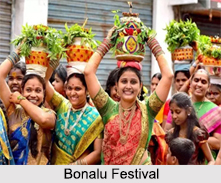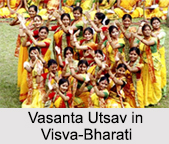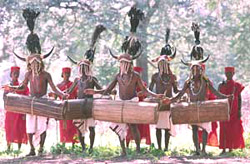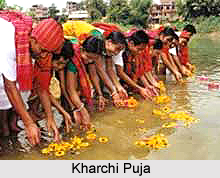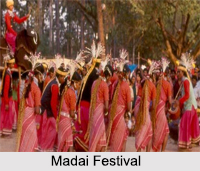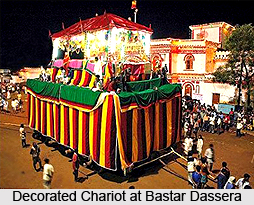 Bastar Dussehra is the most important festival of the Bastar district, situated in the Indian state Chhattisgarh. It is the grand celebration of Dassera festival, in the month of October-November, where various tribes partake in the event. The Amavasya of the month of Shravan marks the beginning of the festival which continues for 75 days and ends on the thirteenth day of the bright moon in the month of Ashwin. Specific rituals are observed on specific days of Bastar Dussehra. The celebration in this region is quite distinct from the celebrations of Dussehra in other parts of the country owing to its unique rituals and beliefs.
Bastar Dussehra is the most important festival of the Bastar district, situated in the Indian state Chhattisgarh. It is the grand celebration of Dassera festival, in the month of October-November, where various tribes partake in the event. The Amavasya of the month of Shravan marks the beginning of the festival which continues for 75 days and ends on the thirteenth day of the bright moon in the month of Ashwin. Specific rituals are observed on specific days of Bastar Dussehra. The celebration in this region is quite distinct from the celebrations of Dussehra in other parts of the country owing to its unique rituals and beliefs.
Mythology of Bastar Dussehra
In Bastar Dassera the tribal people do not rejoice the victorious return of Lord Rama after 14 years of exile to Ayodhya. Instead Bastar Dussehra is the congregation of Devi Maoli and all her sisters. Devi Maoli is regarded as native deity of Bastar and is worshipped as the elder sister of Devi Danteshwari, who is the family goddess of the ruling Kakatiya family. Flower-bedecked local deities are brought by numerous priests in a ceremonious way to the Danteshwari temple situated in Jagdalpur.
Involvement of Different Tribes in Bastar Dussehra
People belonging to varied castes and tribes participate in the festival and each community is assigned a specific task which specific communities have been performing since decades. Mundas hailing from Potanar village cherish the privilege of singing hymns at all the rituals of Bastar Dassera.
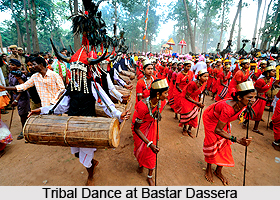 Carpenters arrive from Beda Umargaon village for making the two-tiered chariot. Tribals of Sonabal, Kesarpal and Karanji villages are given the task of making special massive ropes. Youth of Agarwara Pargana and Kachorapati pulls the small chariot while the large chariot is pulled by the marias of Killepal.
Carpenters arrive from Beda Umargaon village for making the two-tiered chariot. Tribals of Sonabal, Kesarpal and Karanji villages are given the task of making special massive ropes. Youth of Agarwara Pargana and Kachorapati pulls the small chariot while the large chariot is pulled by the marias of Killepal.
Features of Bastar Dussehra
The inception of Bastar Dussehra is believed to have enrooted in 15th century by the fourth Kakatiya ruler, Maharaj Purushottam Deo. During the event the king, being the high-priest of Devi Danteshwari, temporarily abandons office for devoting himself to the worship of Danteshwari for 10 days. It is believed that through a medium possessed by the Devi, he seeks a report of the state during this festival. Although the festival has Hindu roots as the ruling family follow Hinduism, a number of tribal elements have been incorporated in the rituals making the festival an exquisite blend of tribal and Hindu traditions which also reflects in the local culture.
Specialities of Bastar Dussehra
There are certain features of Bastar Dussehra which have made the festival unique among the plethora of Indian festivals. Bastar is located in Dandakarnya, the place where Lord Rama is said to have spent his 14 years of exile. In spite of this, the festival has no association with Lord Rama or Ramayana. Spanning for 75 days, it is considered to be the longest Dassera of the world. Some of the rituals of the festival require extraordinary rigor like dancing jarringly on the roads, a young Jogi buried shoulder-deep in a vigil for 9 days, mediums possessed by local deities and a girl swinging on a bed of thorns. A forum is also provided for the tribal chieftains, administrators and elected representatives for making grants. Rath Yatra is one of the most celebrated events of Bastar Dussehra in which a huge chariot is pulled by 400 marias. The chariot looks primitive but it is in fact symbolic of the tribal King`s patronage to the local craft and represents the tribal beliefs of restraining the use of sophisticated tools to craft fancy chariots. The chariot is made fresh every year.
